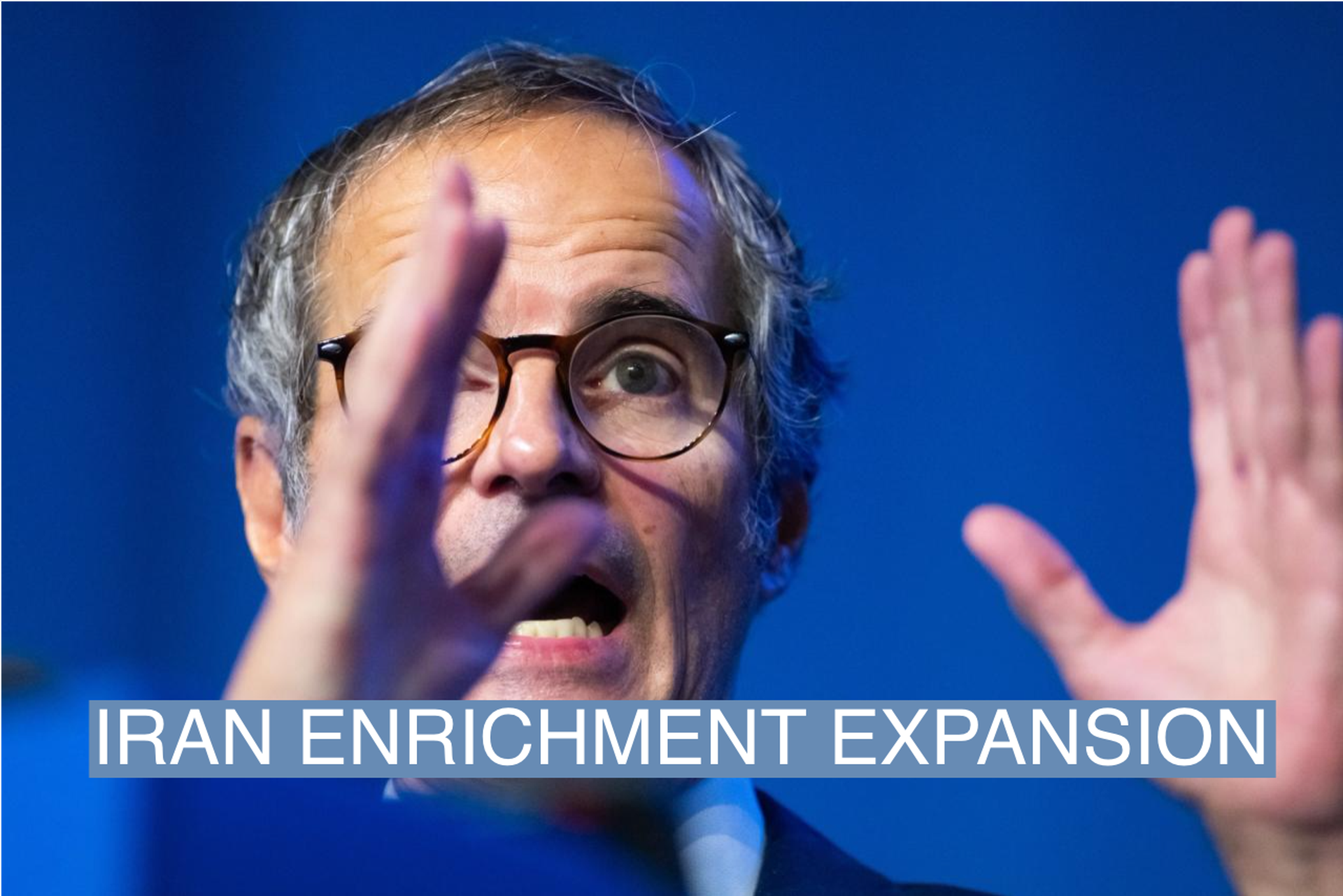The News
Iran tripled its output of near-weapons grade nuclear fuel over the past three months, the UN’s nuclear watchdog said on Tuesday, signaling the reopening of a dangerous front in Tehran’s conflict with the West as the Gaza war intensifies.
The International Atomic Energy Agency told member states in a confidential report that Iran is now producing uranium enriched to 60% purity at a rate of 9 kg per month, up from 3 kg over the summer and early fall. The U.S. estimates that Tehran already has amassed enough fissile material for the production of three nuclear weapons and is moving dangerously close to the 90% purity that’s considered weapons grade.
Tehran has “increased its production of highly enriched uranium, reversing a previous output reduction from mid-2023,” the IAEA said in the report, which was first viewed by the Associated Press and Reuters.
Iran scaled back its production of 60%-enriched uranium following a back-channel agreement reached last spring between the Biden administration and Iran, Middle East officials told Semafor. In return for this reduction, the U.S. greenlighted the release of billions of dollars of frozen Iranian energy revenues held in Asian and Mideast banks. This sequenced deal also included a September prisoner-swap agreement that resulted in five American citizens being released from Iranian detention.
But the October 7 terrorist attack on Israel launched by the Palestinian militant group Hamas, which is armed and financed by Iran, has significantly stoked tensions between Washington and Tehran and apparently upended the nuclear compromise.
Iranian-backed proxies in Iraq, Syria and Yemen have drastically increased attacks on U.S. and Western targets over the past three months. This included a Christmas Day strike on a U.S. military base in northern Iraq that injured three American servicemen, one critically. The Pentagon retaliated later Monday by launching three strikes on Iranian-backed militias in Iraq. Also on Monday, a suspected Israeli airstrike killed a senior Islamic Revolutionary Guard general in Syria, Seyed Razi Mousavi, drawing threats of retaliation from Tehran.
The IAEA said in its report that Iran began ramping up the production of near-weapons grade fuel in late November at its enrichment facilities in Natanz and Fordow. The agency also reported that Tehran has reconfigured its centrifuge machines in a way that could allow it to produce nuclear fuel at an even faster rate.
In this article:
Jay’s view
Iran appears committed to using its nuclear program as a tool to pressure the U.S. and the West for their support of Israel. But the question now is whether Tehran will use the Gaza crisis as cover — or a pretext — to even further advance its atomic capabilities.
U.S. officials and nuclear experts are particularly concerned that Iran might move to produce weapons-grade uranium at 90% purity, arguing it’s for non-military purposes. (Iran is currently the only non-nuclear weapons state in the world to be enriching uranium to 60%. A number of countries with civilian nuclear power programs, such as Brazil, Argentina and Japan, enrich uranium at lower levels.) Tehran has claimed for years that it’s developing a nuclear-powered submarine, which would require weapons-grade fuel. Using highly enriched uranium for such purposes wouldn’t technically place Iran at odds with the UN’s Nuclear Nonproliferation Treaty, of which it’s a signatory.
Israeli Prime Minister Benjamin Netanyahu has repeatedly said his country would launch military strikes against Iran’s nuclear infrastructure if Tehran moved to enrich to 90%. Successive U.S. administrations have often vowed to prevent Iran from acquiring weapons grade fuel.
“They can…spring to 90%. They don’t need to build, manufacture, the nuclear weapon, because they have the design,” Olli Heinonen, a former IAEA deputy director, told Semafor earlier this year. “And that’s part of the problem because that part has not been verified, how far they got’ in developing nuclear weapons capabilities.
The IAEA’s director general, Rafael Grossi, is currently pressing Iran to explain the presence of undeclared nuclear materials at three sites inside the country.
The View From Tehran
Iran denies that it’s pursuing nuclear weapons and says it’s cooperating with the IAEA. Tehran also says that reports of undeclared nuclear materials inside the country are the product of fraudulent reports spread by Israel. Iran’s ambassador to the IAEA, Mohsen Naziri Asl, told state media on Monday that Tehran’s displayed “exemplary cooperation” and that 12 IAEA inspectors on average have been at work inside Iran.
Naziri Asl also said that Tehran is pressing multinational organizations to expose and constrain Israel’s nuclear weapons, which the country neither confirms nor denies possessing. “Following negotiations between Islamic countries, three statements were proposed regarding three issues including: Israel’s crimes in Gaza, the Israeli regime’s threat to use nukes and the necessity to deal with the regime’s undeclared nuclear weapons program,” Naziri Asl said.
Notable
- Yemen’s Houthi rebels claimed responsibility for a another missile strike on a container ship in the Red Sea on Tuesday.
